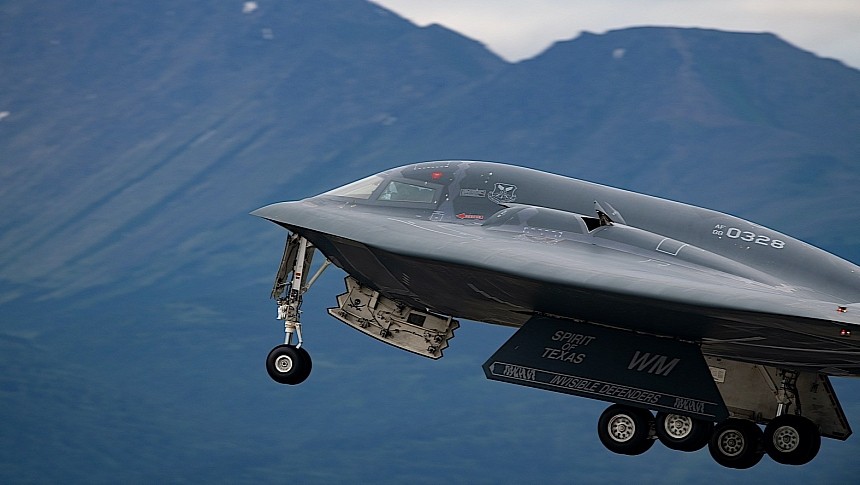Believe it or not, despite being the most capable military on the planet the U.S. does not have all that many dedicated bomber aircraft. In fact, there are just three families of them, and they are so cherished by the nation that as a trio they are known as the Bomber Trifecta.
The planes I’m talking about are the B-1 Lancer, B-2 Spirit and B-52 Stratofortress. None of them is in any way new (the B-52, for instance, is poised to become the first airplane to still be in operation when it turns 100 in the 2050s), but each has something unique to offer and the U.S. Air Force (USAF) seems quite unwilling to let any of them go.
The focus of our story today is the B-2 Spirit. Younger than any of the other two (it was introduced in 1989), the plane is also the most modern. Yet, at over 30 years old in such a dynamic environment, it still is in need of serious modernization.
The current focus of the USAF and the plane's maker, Northrop Grumman, falls on the Spirit’s digital capabilities. More precisely, the bomber's ability to be remotely loaded with mission profiles so that its crew can “focus more on mission execution.”
The way the two organizations do that is by trying to integrate new hardware, software and capabilities into the plane. And that's exactly what was recently put to the test at the Whiteman Air Force Base in Missouri.
There, one of the just 20 B-2s in existence, the one called the Spirit of Kitty Hawk, was equipped with Northrop's Multi Mission Domain (MMD) architecture – that’s an open mission system meant to allow for “rapid and affordable fielding of modern mission capabilities.”
The MMD is integrated with the plane's Adaptable Communications Suite (ACS) ground station and allows for machine-to-machine transfer of new mission data.
The test conducted at an undisclosed date lasted for two days, during which time no less than 50 mission transfers were conducted. The ground ACS used the plane’s MMD interface to directly load mission data to the Spirit’s drive unit while the airplane was in flight. The exact details of what that means in terms of speed of transfer and effects on the airplane’s operations were not disclosed.
The digital enhancements the bomber is now getting will not affect its innate abilities though. Powered by four 17,300-pound of thrust General Electric engines, the B-2 can reach speeds of just under the speed of sound, and has intercontinental range. The bomber can carry an assortment of bombs, from conventional to nuclear ones.
As for the cost of such a weapons platform, the USAF paid over $1.1 billion (fiscal 1998 constant dollars) for each of the 20 units it had made.
The focus of our story today is the B-2 Spirit. Younger than any of the other two (it was introduced in 1989), the plane is also the most modern. Yet, at over 30 years old in such a dynamic environment, it still is in need of serious modernization.
The current focus of the USAF and the plane's maker, Northrop Grumman, falls on the Spirit’s digital capabilities. More precisely, the bomber's ability to be remotely loaded with mission profiles so that its crew can “focus more on mission execution.”
The way the two organizations do that is by trying to integrate new hardware, software and capabilities into the plane. And that's exactly what was recently put to the test at the Whiteman Air Force Base in Missouri.
There, one of the just 20 B-2s in existence, the one called the Spirit of Kitty Hawk, was equipped with Northrop's Multi Mission Domain (MMD) architecture – that’s an open mission system meant to allow for “rapid and affordable fielding of modern mission capabilities.”
The MMD is integrated with the plane's Adaptable Communications Suite (ACS) ground station and allows for machine-to-machine transfer of new mission data.
The test conducted at an undisclosed date lasted for two days, during which time no less than 50 mission transfers were conducted. The ground ACS used the plane’s MMD interface to directly load mission data to the Spirit’s drive unit while the airplane was in flight. The exact details of what that means in terms of speed of transfer and effects on the airplane’s operations were not disclosed.
The digital enhancements the bomber is now getting will not affect its innate abilities though. Powered by four 17,300-pound of thrust General Electric engines, the B-2 can reach speeds of just under the speed of sound, and has intercontinental range. The bomber can carry an assortment of bombs, from conventional to nuclear ones.
As for the cost of such a weapons platform, the USAF paid over $1.1 billion (fiscal 1998 constant dollars) for each of the 20 units it had made.
























